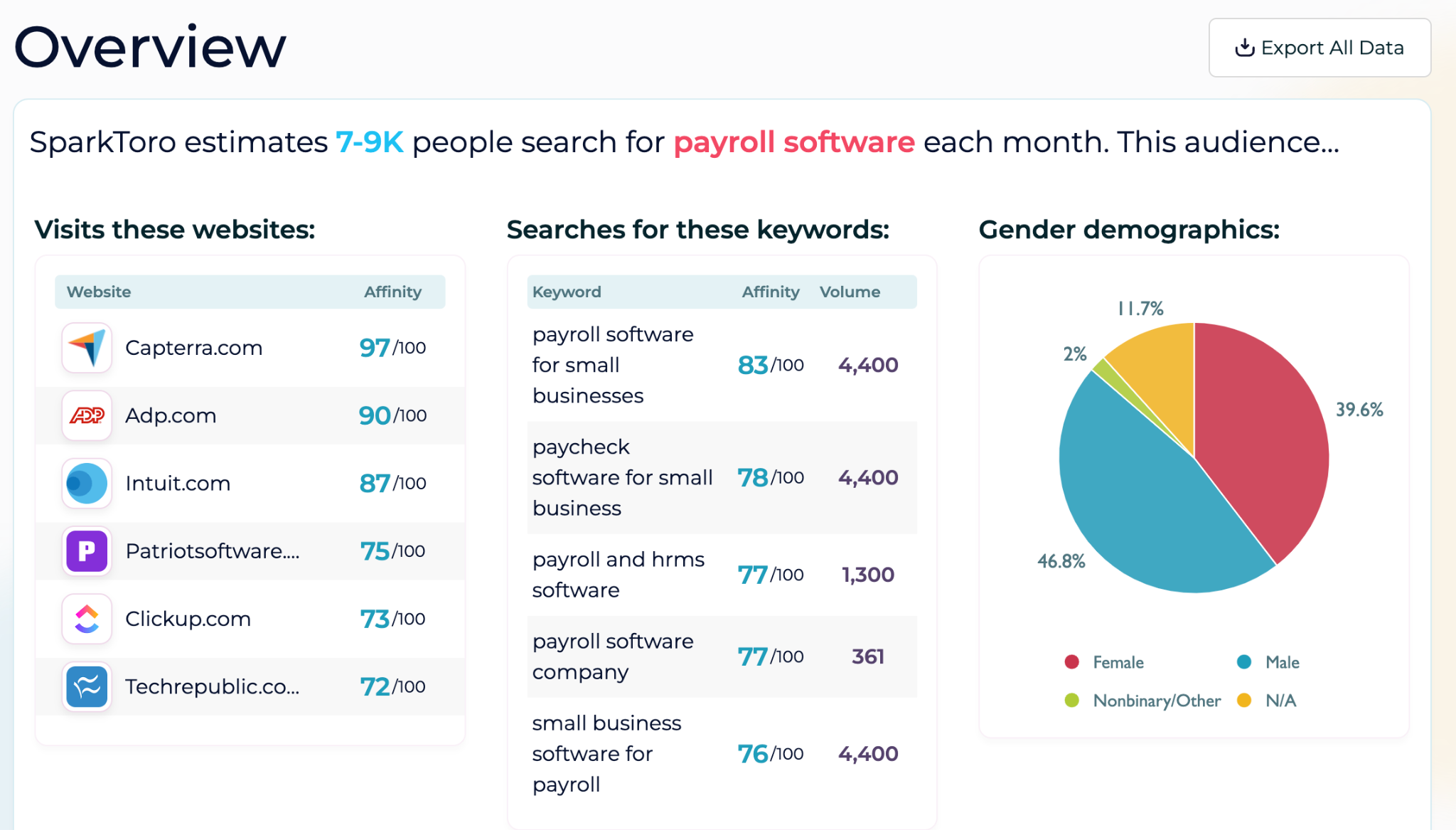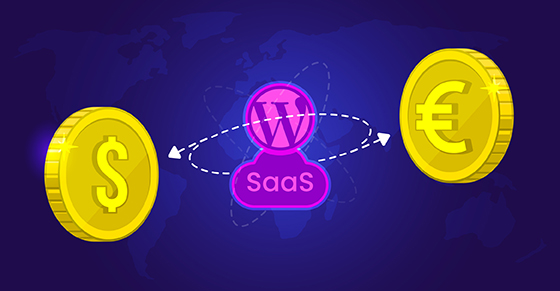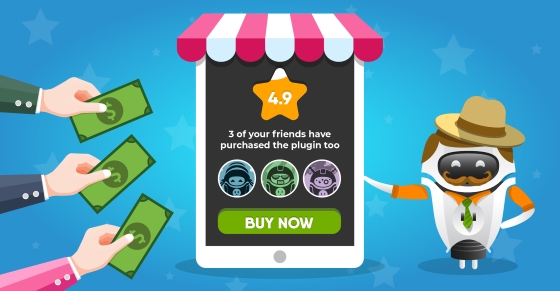Key Article Takeaways:
- Digital PR focuses on building relationships with journalists and influencers to get mentioned in their content — one mention in the right publication or YouTube video can be a game-changer for your software business.
- While SEO is formulaic, PR is not — you need to find out which influencers/experts your audience follows and determine what content would be mutually beneficial.
- Through strategic outreach and top-quality content that addresses your audience’s questions and doubts, you can build relationships with journalists and publications and boost your chances of being featured.
Marketing typically doesn’t come naturally to software makers. But breaking through the digital noise and reaching your target audience is non-negotiable, given the competitiveness of the software space.
Like many others, you may have dabbled with SEO (search engine optimization): the art of crafting content that ranks high in search results. But what if there is a better approach, a strategy that harnesses the power of influence and builds trust with your target audience more quickly?
Instead of leveraging the science of keywords and algorithms, digital PR taps into the magic of storytelling and relationship building.
Imagine this: no more chasing elusive top rankings on Google. Instead, you’ll collaborate with industry influencers who’ll sing your software’s praises to their audiences if they believe in your product.
The potential result? A surge of qualified leads who are already primed to investigate the value you offer.
To explore digital PR and its nuances, we invited Rand Fishkin — one of the leading voices in SEO and educational marketing — to join us for the launch of plugin.fm season 2:
In this article, we distill Rand’s wisdom into key tips and insights you can implement in your digital PR strategy. But first:
What Is Digital PR?
Traditional PR typically involves getting mentioned in physical media like newspapers, magazines, etc.
But digital PR takes an online-focused approach to spreading the word. It helps you build buzz around your product and enhance brand perception through strategic communication with influential people and publications that resonate with your target audience.
“PR might include producing interesting research that publications your audience reads would be likely to cover. Then, you aim to form connections with the people who write for, own, or are the gatekeepers of those publications,” says Rand, who goes on to explain that “publications” can mean many things:
- Social media accounts (LinkedIn and X)
- YouTube channels
- Podcasts
- Traditional media
- Niche media
- Industry events
- Conference speakers
Digital PR is essentially a branch of digital marketing. By employing it, you’re leveraging the credibility and authority of these publications to reach new audiences with your expertise, service, or product in a way that makes sense for both the publisher and their readers.
For example, an AI software product could get featured in a respected tech blog read by a loyal base of developers worldwide, giving the tool valuable exposure and potentially changing the fortune of the software maker for the better.
You may be wondering why guest blogging didn’t appear on the above bullet list 🤔 Digital PR and guest blogging differ in these ways:
Guest posting involves writing and publishing articles on other websites to gain SEO-enhancing backlinks and access new audiences while establishing the author’s authority in a specific field.
Digital PR focuses on broader engagement, using strategies like press releases and media relations to enhance brand visibility, manage reputation, and secure coverage in various digital media outlets.
Digital PR activities include:
- Leveraging the power of social media to boost your credibility and showcase expertise
- Positive mentions and reviews online from respected sources to establish your software product as a legitimate player in the market
- Appearing on podcasts to establish thought leadership
Think of it like creating a snowball effect. You put out great content online and network with the right people to increase its visibility. People see it and talk about it, and before you know it, more and more users discover your plugin.

True — reaching out to journalists, bloggers, vloggers, YouTubers, podcast owners, and influencers can feel unnatural and may require developing new communication skills — but as a one-man-show or small business, you’ll find digital PR is a cost-effective way to showcase the value of your software product without needing a big marketing budget.
Why PR Might Trump SEO for Software Businesses
While SEO and PR are both valuable tools for marketing your software product, digital PR offers distinct advantages, particularly for small software businesses and bootstrappers.
Let’s compare:
Reaching the Right Audience Directly
- SEO: Involves targeting an audience based on keywords. You optimize your product’s website and content to rank higher in search results for relevant terms. The challenge? While SEO is highly effective for reaching a targeted demographic actively seeking information, it might not reach a wider audience that could be interested but isn’t directly searching for the specific keywords you are targeting.
- PR: Digital PR can introduce your content or brand to new audiences through various forms of media exposure, not limited by their current search behavior, and help you target your audience more directly. By building relationships with journalists and influencers who write for websites or social media channels popular with software developers, you can get your product directly in front of potential customers who are already interested in solutions like yours.
Building Credibility and Trust
Building trust with potential customers is essential, especially for a new software business.
- SEO: While SEO can help people find your SaaS or software product, it doesn’t necessarily establish trust. Your website content might be well-optimized, but it’s still self-promotion.
- PR: Positive endorsements from established sources like industry publications or respected bloggers carry significant weight. A glowing review from a journalist or influencer can instantly boost your software product’s credibility and make potential customers more likely to try it.
Getting Faster Results and Potentially Higher ROI
SEO is a marathon, not a sprint. It takes time and ongoing effort to see significant results. Have you just launched your website? It’ll probably take up to six months for search engines to notice you.
- SEO: Even after you’ve “been noticed”, ranking high in search results for competitive keywords can take more months of consistent work (because Google’s regular algorithm updates can mess with your efforts and set you back).
- PR: A successful PR campaign, like a well-placed article in a relevant publication, can generate a quicker influx of qualified leads who are already interested in what your software product offers. This can lead to a faster return on investment (ROI) than SEO.
Rand elaborates:
I would argue that the most underinvested [channel] with the highest promise and highest return is PR. […] One mention by the right source of influence can be absolutely incredible. Totally game-changing.
He adds that unless your business is strictly about educational, problem-solving content that your audience will likely find on Google, you can expect to see ROI from SEO in about 5–10 years.
Even so, remember that you don’t have to choose between the two marketing channels — SEO and PR aren’t mutually exclusive. A well-crafted digital PR strategy can incorporate SEO principles to maximize reach.
For example, backlinks from news publications and relevant websites in your industry or optimizing articles for readability.
Still, for small software businesses looking to make a splash quickly and build trust with their target audience, PR is a powerful tool to get their foot in the door, while SEO may be too competitive.
“SEO is not the default decision like in 2012 or 2005,” Rand states. “I’m familiar with SaaS businesses that have been around for 5+ years and have generated thousands of SEO content pieces that haven’t seen much success, possibly due to what Google chooses to rank.”
Google has a preference for 10 year+ long-standing brands. Those brands’ investments in nearly every keyword in nearly every space are so complete that the opportunity in SEO is extremely limited in most sectors and niches
Rand doubles down on the cost-effectiveness of digital PR over SEO:
NEW post: https://t.co/27leFgzTQ4
If you pay an SEO agency to get you 50 “high quality links” for $5,000, and refuse to pay a digital PR agency to get 10 mentions in relevant publications for the same price, I’d argue you’re making a very unwise tradeoff. pic.twitter.com/edkxS7eeq0
— Rand Fishkin (follow @randderuiter on Threads) (@randfish) January 14, 2021
With the above positives in mind, why hasn’t digital PR rivaled SEO in the smaller software ecosystems up until now?
The Problem With Digital PR in Smaller Software Ecosystems
If digital PR is so effective for visibility, why don’t more developers use it?
In the micro SaaS and WordPress spaces, the biggest influencers are on YouTube and X but the number is relatively small. We’re talking in the hundreds, and, based on intuition, it’s definitely not more than two thousand.
The amount of products in our industry is about 200k+, so the perception is that it’s almost impossible to get attention from popular channels/influencers when the competition is so fierce. So unless you have a very successful product or the influencer somehow finds your product by themselves, it’s really tough to break through.
To establish a relationship with an influencer, you’ll probably need to meet them face-to-face at a physical event. This requires a budget to travel and spending time chasing something when there’s no guarantee of a positive outcome.
If you are an indie-hacker/solopreneur or a small team, it’s highly unlikely you’ll allocate your precious resources to such activity.
According to Rand, it’s also because digital PR is extremely underinvested — here are potential reasons why:
- Misconceptions about PR: You might see PR as solely for big companies or B2C products, or believe it’s just about press releases and media placements. This overlooks the importance of building relationships and thought leadership.
- Lack of resources: Learning the ropes of digital PR takes time and effort, which can be a challenge for busy software makers.
- Technical mindset: You might be more comfortable focusing on the technical aspects of software products than crafting compelling stories and pitches for journalists, especially since communication style and target audience for digital PR can differ significantly from technical documentation.
Rand expands:
SEO is very formulaic. If you’re a programmer, you understand, “I make this content that solves the searcher problem, and then I target these keywords, and then I optimize it in these ways, and I make it accessible in these ways, and I distribute it in these ways.” And PR is not like that.
He also emphasizes that different aspects of PR may be more challenging for different people: for some, it’s knowing what to pitch, while for others, it’s that they don’t know who to pitch to.
Then again, software makers aren’t known for being “outgoing” so it follows that they wouldn’t enjoy the process of pitching anyway 🤷
But this should be prioritized, regardless of whether pitching daunts you or not: the success of your software product might be just outside of this comfort zone.
And we’ve got just the tips to help you get started;
How to Build a Digital PR Plan for Your Software Product
Now that you know what digital PR is and why you should make room for it in your software product marketing strategy, here’s how to implement it with success (and confidence).
Know Your Audience
The foundation of any good PR strategy is understanding who your ideal customer is.
- Are you targeting small businesses in a specific industry or mass market?
- Is there a specific geographic location you want to focus on?
- What specific challenges or frustrations does your ideal customer face?
- How can your software product uniquely address those pain points?
- Who typically makes purchasing decisions within your target audience?
By clearly defining your target audience, you can tailor your PR efforts to reach the people most likely to benefit from your plugin.
Find Your Champions
Now that you know who you want to reach, identify the journalists and influencers who resonate with them.
There are a few ways to do this research:
- Look for industry publications, websites, or social media channels popular with your target audience (for instance, a software maker who’s built a savings and budgeting plugin might want to look at publications and websites like The Financial Diet)
- Research the journalists and bloggers who write for these outlets. Who are the thought leaders in your niche? (in the personal finance world, it may be Humphrey Yang — shooting high, we know 😉)
- Network and connect with speakers, panelists, and attendees who demonstrate expertise and hold influence at conferences or trade shows where your target audience gathers
- Identify your competitors and research journalists and influencers who cover them
Leverage automation tools to speed up your research! Software like SparkToro can help you identify which websites, social media accounts, YouTube channels, and other online sources your target audience frequents, and even the keywords they search for.

Craft Your Story
Engaging content that shows your personality and addresses your audience’s pain points will help build credibility and expertise.
After all, relevant content will also be more appealing to journalists you’re pitching to — 75% prefer sharing something truly valuable with their audience and over 30% of journalists only consider a pitch if it clearly shows what issues a product solves for their readers.
Rand confirms that in distribution channels like digital PR or social media (which can be used to serve your PR efforts), unique data or unique opinions play a key role.
Here are a few ideas for inspiration:
- Don’t be afraid to share your distinctive point of view through thought leadership and personal stories, such as the “aha!” moment that led to your product’s creation or how you maintain happiness and productivity as a software creator/founder.
- What problem does your software product solve? Focus on the benefits it offers to potential customers.
- Is there a one-of-a-kind angle to your product’s story or your business approach that could be newsworthy?
- Was your software product a passion project that overcame challenges to succeed? Share the underdog narrative to connect with users who value perseverance.
While stories resonate, backing them up with data contributes to their effectiveness. Include success stories and testimonials from real users to solidify the narrative.
And the more compelling and unique your content is, the better your chance of grabbing the attention of journalists and influencers.
Build Relationships, Not Just Links
Reaching out to journalists and influencers shouldn’t be a “one and done” deal. Remember that journalists may receive hundreds of pitches per week, so without building a genuine relationship first, it’ll be difficult to make yours stand out.
Before you send an outreach message, follow relevant journalists on X/Twitter and LinkedIn (you can identify them using SparkToro). Share their content, participate in discussions, and establish yourself as an authority who is willing to engage — it’ll help you get noticed.
Don’t use one generic message template and copy-paste it to everyone. Generic emails or LinkedIn messages typically end up unanswered. Research the journalist or influencer and tailor your message to their specific interests.
The journalist or influencer you’re contacting should see value in your pitch. Can you provide them with expert insights for an article they’re writing or could your software product solve a problem they’ve mentioned?
Don’t forget to be mindful of the person’s time. Keep your outreach concise and professional.

If you don’t hear back within a week, a polite follow-up email is acceptable. Briefly restate your offer and avoid sounding pushy. If you do hear back, be prepared to answer follow-up questions, provide screenshots, or offer a demo of your software product 🦾
Use Free and Powerful PR Tactics
With limited resources, you can still make a splash by implementing the following tactics:
- Join the conversation: Actively participate in online communities and forums related to your niche. Offer helpful advice and showcase your expertise.
- Repurpose content to make it shareable: Create valuable content (blog posts, white papers) that educates your target audience about topics relevant to your plugin. Share this content on social media and with relevant online communities. Other content formats that can generate attention include LinkedIn articles, social media posts, and videos — if they resonate, the more likely they’ll be shared.
- Accept interview invites: If a blogger, journalist, or podcast host identifies you as an expert in your niche, there’s a good chance interview invitations will be coming your way. Interviews are incredible opportunities to share your knowledge with reputable publications or podcasts and their audiences.
Rand validates this with an example:
I will go on 10 podcasts and one of them will pop. Our analytics data from the day of release proves this. And the next day, and the third day, and so on — suddenly there’s 20% more branded search traffic and 15% more signups than usual, with tons of people trying the free account.
See also: The Benefits of Podcasting for Business: What We Learned from Launching plugin.fm
Co-marketing partnerships: Rand also sees co-marketing activities with partners as effective ways to get in front of your target audience. He expands by sharing a personal example with Typeform:
“I’m building audience research survey templates for B2B and B2C with Typeform. Once they’re done, we’ll produce a webinar series to promote the templates. This project benefits us both. Firstly, it’ll make people aware of Typeform. Secondly, their audience is probably a hundred times bigger than SparkToro’s, so we’ll get in front of the right people and get them thinking about audience research in general.”
Grab a free copy of our Cheat Sheet for
Selling Plugins and Themes
A growth roadmap with concise, actionable tips for every milestone of WordPress product development.

Hire a Consultant or an Agency
For many solopreneurs and small software businesses, hiring a consultant or agency to help with digital PR might be beyond their means. Even so, Rand highly recommends it, especially for those new to the strategy:
I love using consultants and agencies. I’m surprised so many are against it. I think it’s so weird because we use those people for everything.
If you have the budget (likely between $20 and $500 per hour for a US-based PR company), it’s a valid consideration.
Why? PR experts in your field can provide tons of tips and insights because of their diverse experience with similar software businesses.
Sure, the pricing can be steep, but Rand maintains you could see a 10x ROI on what you’ve paid if their tactics work. And if not, “it’s easier to end a contract with an agency or a consultant than an employee”, he says.
If you’re considering this route, our advice is to spend a good amount of time researching to find an agency/consultant with experience in your niche. One way to do this is to search for agencies/consultants that have successfully worked with your direct competitors.
Find the right fit, and you, as a busy software maker, have more time to focus on developing your product instead of training them on the ins and outs of your niche.
They can also help with content creation: consultants with experience in smaller software spaces can translate technical features into clear, concise messaging that resonates with a non-technical audience.
It’s worth a try, at least, right?
Take Action By Exploring the Promise of Digital PR
Digital PR can get your software noticed by a wider audience, establishing credibility and positioning your brand as a leader in your market. See it as an investment in your brand’s future that drives sustainable growth and builds on success.
As Rand puts it — one mention by the right publication or influencer can change the game for your software product.
Love what you’ve just read? Explore more on our blog or get in touch with our team if you have any questions about monetization for software like WordPress products and SaaS.








![The Freemium Business Model In The WordPress Ecosystem [+Video] – A Tool For Increasing Sales?](https://freemius.com/blog/wp-content/uploads/2018/10/freemium-business-model-wordpress-featured-image.jpg)